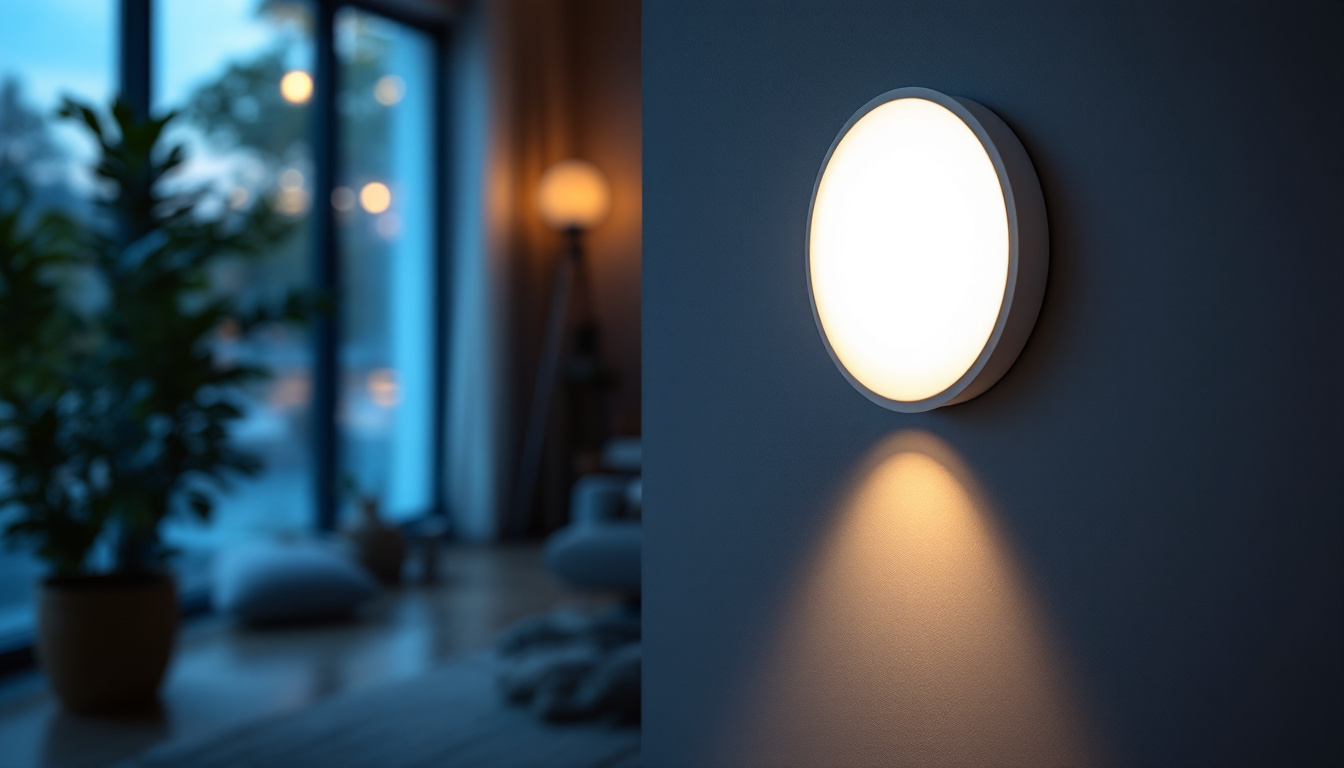
For lighting contractors, the garage represents a unique challenge and opportunity. Unlike typical residential or commercial spaces, garages serve multiple functions—from vehicle storage and maintenance to workshops and hobby areas. A well-planned lighting layout not only enhances visibility and safety but also increases the overall functionality of the space. Efficient garage lighting design can significantly reduce energy consumption, improve user experience, and elevate the value of the property.
Statistics show that poorly lit garages contribute to a higher risk of accidents and theft, emphasizing the need for strategic lighting solutions. Moreover, as energy efficiency standards tighten and clients become more environmentally conscious, contractors who master garage lighting layouts can differentiate themselves in a competitive market.
Garages are often overlooked in lighting projects, yet they offer substantial potential for contractors to showcase their expertise. The complexity of garage lighting—balancing task lighting, ambient illumination, and security—requires a tailored approach. By mastering garage lighting layouts, contractors can deliver superior results that satisfy both practical needs and aesthetic preferences.
Additionally, garages typically have fewer natural light sources, making artificial lighting the primary illumination method. This increases the importance of selecting the right fixtures, placement, and controls to ensure uniform coverage and minimize shadows. Contractors who understand these nuances can provide solutions that enhance client satisfaction and reduce callbacks.
Moreover, the integration of smart lighting technology in garage designs is becoming increasingly popular. Smart lighting systems allow homeowners to control their garage lights remotely, set schedules, and even automate lighting based on motion detection. This not only improves convenience but also adds an extra layer of security, as lights can be programmed to turn on when someone approaches the garage. By incorporating these advanced features, contractors can offer clients a modern solution that aligns with current trends in home automation and energy efficiency.
Furthermore, the aesthetic aspect of garage lighting should not be underestimated. With the rise of multifunctional garage spaces that serve as workshops or recreational areas, the design of lighting fixtures can enhance the overall ambiance. Choosing stylish, energy-efficient LED options can provide both functionality and a contemporary look, making the garage a more inviting space. By focusing on both the practical and aesthetic elements of garage lighting, contractors can create environments that not only meet the needs of their clients but also reflect their personal style and preferences.
Designing an efficient lighting layout for garages involves several critical components. Each element plays a role in creating a balanced, functional, and energy-efficient lighting environment.
Layered lighting combines ambient, task, and accent lighting to address different needs within the garage. Ambient lighting provides general illumination, ensuring the entire space is lit evenly. Task lighting focuses on specific areas such as workbenches, tool stations, or vehicle bays, where detailed activities take place. Accent lighting can highlight architectural features or storage zones, adding depth and visual interest.
By integrating these layers, contractors can create a versatile lighting scheme that adapts to various uses, improving both comfort and productivity. For instance, when working on a project, bright task lighting can help prevent eye strain and enhance precision, while softer ambient lighting can create a more relaxed atmosphere during downtime. Additionally, using color temperature variations can influence mood; cooler tones can invigorate and energize, while warmer tones can make the space feel more inviting.
Choosing the right fixtures is crucial for performance and durability. LED fixtures are the preferred choice due to their energy efficiency, long lifespan, and low maintenance. High bay or linear LED lights are common for garages with high ceilings, while recessed or surface-mounted options suit lower ceilings.
Placement should minimize shadows and glare, with fixtures spaced to provide uniform light distribution. For example, positioning lights parallel to the garage door can reduce vehicle shadows, enhancing visibility when parking or working on a car. Furthermore, utilizing adjustable fixtures can allow for flexibility in directing light where it is most needed, whether it’s illuminating a newly installed shelf or spotlighting a vintage car restoration project. The strategic arrangement of fixtures can also enhance the overall aesthetics of the garage, transforming it from a utilitarian space into a well-lit, inviting workshop.
Incorporating smart controls such as motion sensors, dimmers, and timers can boost efficiency by ensuring lights operate only when needed. Motion-activated lighting enhances security and convenience, while dimmers allow users to adjust brightness based on tasks or time of day.
Advanced automation systems can integrate with home automation platforms, offering remote control and scheduling capabilities. This not only improves energy savings but also adds a modern touch that appeals to tech-savvy clients. For example, homeowners can program their garage lights to turn on automatically when the garage door opens, providing immediate illumination as they enter. Additionally, integrating voice-activated controls can further enhance user experience, allowing for hands-free operation while working on projects or carrying tools. Such advancements not only streamline the functionality of the garage but also contribute to a safer and more enjoyable workspace.
Efficiency in garage lighting goes beyond fixture choice—it requires strategic design to optimize light output and energy use.
Walls and ceilings painted in light, reflective colors can amplify the effectiveness of lighting by bouncing light throughout the space. This reduces the number of fixtures required and enhances overall brightness without increasing energy consumption.
Contractors should advise clients on surface finishes that complement the lighting design, creating a cohesive and efficient environment.
Zoning divides the garage into distinct areas, each with tailored lighting controls. For instance, a workshop zone might require brighter, focused lighting, while a storage area benefits from softer ambient light. Zoning allows users to illuminate only the areas in use, conserving energy and extending fixture lifespan.
Implementing zoning also improves user comfort by reducing glare and preventing over-illumination.
Garages often evolve in function over time. Designing a flexible lighting layout that can accommodate changes—such as adding new workstations or converting the space for different uses—adds long-term value. Contractors should consider modular fixtures, adjustable mounts, and easily accessible wiring to facilitate future modifications.
Lighting contractors frequently encounter specific challenges when working on garage projects. Understanding these issues and their solutions can streamline installation and improve client outcomes.
Many garages have high ceilings that can cause light to dissipate before reaching work surfaces. To counter this, contractors can use high-output LED high bay fixtures or supplement ambient lighting with task-specific fixtures placed closer to work areas.
Additionally, using reflectors and diffusers helps direct light efficiently, reducing dark spots and glare.
Older garages may have limited electrical capacity or outdated wiring, complicating lighting upgrades. Contractors should conduct thorough electrical assessments and recommend necessary upgrades or alternative solutions like battery-powered or solar lighting where appropriate.
Ensuring compliance with local electrical codes and safety standards is paramount to avoid future liabilities.
Clients often seek cost-effective solutions but may underestimate the importance of quality lighting. Contractors should educate clients on the long-term benefits of investing in durable, energy-efficient fixtures and smart controls. Providing detailed cost-benefit analyses can help clients make informed decisions that align with their budgets and expectations.
Examining real-world examples highlights how thoughtful lighting design can transform garage spaces.
A lighting contractor was tasked with converting a standard two-car garage into a fully functional woodworking workshop. By implementing layered lighting, including bright task lights over workbenches and ambient LED panels for general illumination, the space became highly efficient and comfortable. Motion sensors and dimmers allowed the homeowner to customize lighting based on project needs, resulting in improved productivity and energy savings.
In a commercial setting, a contractor redesigned the lighting layout for an auto repair garage with high ceilings and multiple service bays. Using high bay LED fixtures spaced strategically, combined with adjustable task lighting at each bay, the new system enhanced visibility for mechanics and reduced energy costs by over 40%. The addition of automated controls further optimized operation, contributing to a safer and more efficient workplace.
To maximize project success, lighting contractors should follow these best practices:
Garage lighting layout is a critical aspect of lighting contractor services that can significantly impact safety, functionality, and energy efficiency. By understanding the unique demands of garage spaces and applying strategic design principles, contractors can deliver superior lighting solutions that satisfy clients and stand the test of time.
Embracing modern technologies, prioritizing layered lighting, and addressing common challenges proactively will position contractors as trusted experts in this specialized field. Ultimately, a well-executed garage lighting project not only enhances the space but also boosts contractor reputation and business growth.
Ready to elevate your garage lighting projects with the highest quality fixtures on the market? Look no further than LumenWholesale for all your lighting needs. Our spec-grade lighting products are designed to meet the rigorous demands of any garage space, ensuring safety, functionality, and energy efficiency. With unbeatable wholesale prices and free shipping on bulk orders, you can trust LumenWholesale to provide the best value without any hidden fees. Upgrade your lighting game and give your clients the exceptional results they deserve. Wholesale Lighting at the Best Value is just a click away.

Discover the intricate world of chandeliers from a lighting contractor’s perspective.

Explore the crucial role of ballast electrical systems in lighting projects and discover how they influence the efficiency, cost, and success of contractors’ work.

Discover essential insights on washer machine plug adapters tailored for lighting contractors.

Discover how LED sensor lights are revolutionizing the lighting industry with their energy efficiency, smart technology, and enhanced security features.